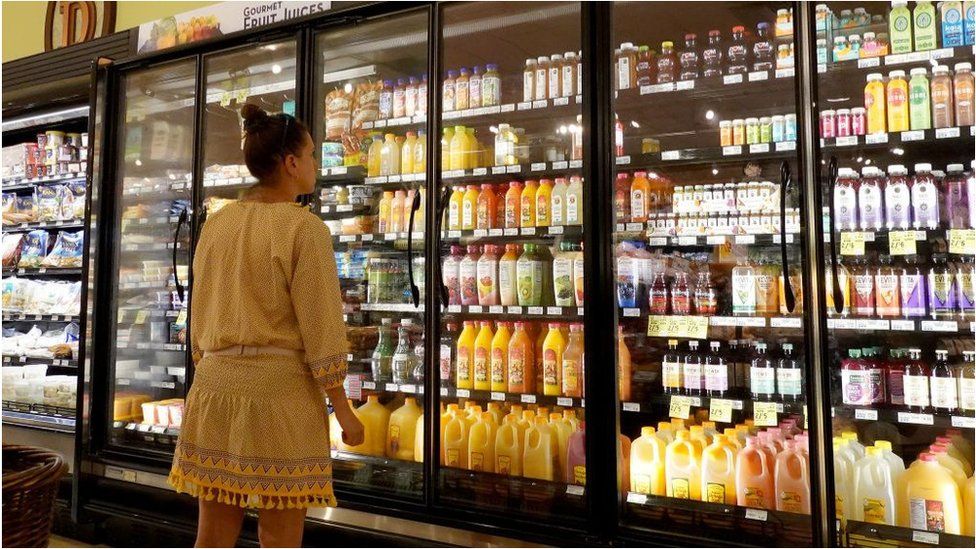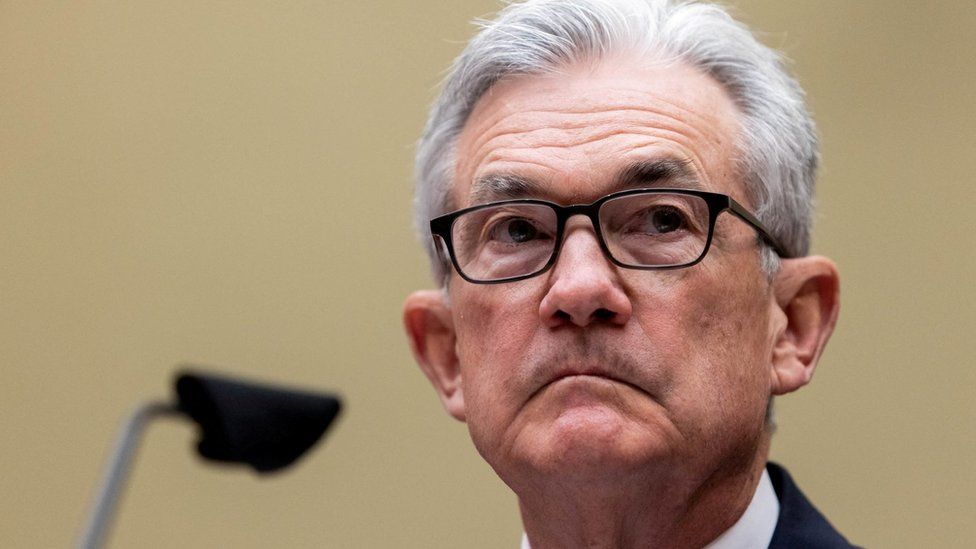
The US central bank has announced another unusually large interest rate hike as it battles to rein in soaring prices in the world’s largest economy.
The Federal Reserve said it would increase its key rate by 0.75 percentage points, targeting a range of 2.25% to 2.5%.
The bank has been raising borrowing costs since March to try to cool the economy and ease price inflation.
But fears are rising the moves will tip the US into recession.
Recent reports have shown falling consumer confidence, a slowing housing market, jobless claims rising and the first contraction in business activity since 2020.
Many expect official figures this week will show the US economy shrank for the second quarter in a row.
In many countries, that milestone is considered a recession though it is measured differently in the US.
At a press conference, Federal Reserve Chairman Jerome Powell acknowledged that parts of the economy were slowing, but said the bank was likely to keep raising interest rates in the months ahead despite the risks, pointing to inflation that is running at a 40-year high.
“Nothing works in the economy without price stability,” he said. “We need to see inflation coming down…That’s not something we can avoid doing.”

How does raising interest rates fight inflation?
Higher interest rates help to fight inflation by raising the cost of borrowing, encouraging people and businesses to borrow and spend less. In theory that is meant to lead to lower demand and slow price rises – but it also means less economic activity.
Mr Powell said some slowdown was “necessary”.
“We’re not trying to have a recession – and we don’t think we have to,” he added.
As US growth stalls and price rises squeeze households around the world, the International Monetary Fund (IMF) warned this week that the global economy may be teetering on the brink of recession.
Already, some firms in the tech and housing industries – which saw rapid gains in recent years thanks to low borrowing costs – have announced job cuts or plans to slow hiring, citing the market shift
But with inflation soaring, central banks “don’t really have a choice” but to increase interest rates, said economist Pierre-Olivier Gourinchas, director of research at the International Monetary Fund.
Earlier this month, the European Central Bank announced an unexpectedly large rate rise – its first in 11 years. The Bank of England has been raising rates since December, and dozens of other countries have taken similar steps.
“Most central banks are tightening monetary policy,” said Mr Gourinchas. “The big question looking ahead is how quickly can this monetary tightening bring back inflation to reasonable levels.”
How high is US inflation?
Inflation in the US rose to 9.1% last month, driven by higher prices for gasoline, food and shelter. That is well above the Fed’s 2% target – and the fastest rate since 1981.
Efforts to tame price increases at that time led the Fed to raise interest rates to more than 15% and sent the economy into a decline that lasted more than a year.
Wednesday’s rate rise, the fourth since March, will push the rate the Fed charges banks to borrow to more than 2.25%, a level last seen in 2019, just above where rates were in the months before the pandemic hit in 2020.
But businesses and households have grown accustomed to low interest rates, which have rarely risen above 2% since the 2008 financial crisis. And the Fed is also hiking unusually fast, with Wednesday’s rise marking the second 0.75 percentage point increase in a row.
“This is rapidly proving to be one of the most aggressive hiking cycles we’ve seen in recent decades,” said Seema Shah, chief strategist at Principal Global Investors.
“Combatting four-decade high inflation will take a sustained show of strength.”

Business ‘dropped off a cliff’

Arizona mum-of-three Jessica Duran is one of thousands of workers in the property industry who has lost her job in recent weeks.
She says her business working on loans for prospective home buyers in one of America’s hottest housing markets “dropped off a cliff” in March, as the US central bank started to raise rates.
When her company told her it was cutting her job, she wasn’t initially worried about finding a new one. But the 29-year-old says dozens of applications and aggressive networking in the weeks since have led nowhere.
Now she’s worried she may be out of work until the market picks up again – which may not happen for months.
“I feel like I spent two years rejecting job offers and now I’m out there begging on the streets,” she says. “I’m concerned about how long the job market, the housing market is going to stay down. If it continues in this direction, that’s thousands of jobs.”

Analysts expect the Fed to raise rates to between 3% and 4% by the end of the year. Financial markets jumped after the Mr Powell’s press conference on hopes the pace of increases may slow in coming months.
Analysts say they still think the US can avoid severe economic pain, pointing to a jobs market that is still adding hundreds of thousands of jobs each month. Consumer spending – which accounts for almost 70% of the economy – has also held up, though growth has slowed.
“To get it just right so as to cool the economy but not tip the economy into recession – that’s a challenging proposition, even in the most normal times and we are in a very complicated environment right now,” said Madhavi Bokil of Moody’s Investors Service.